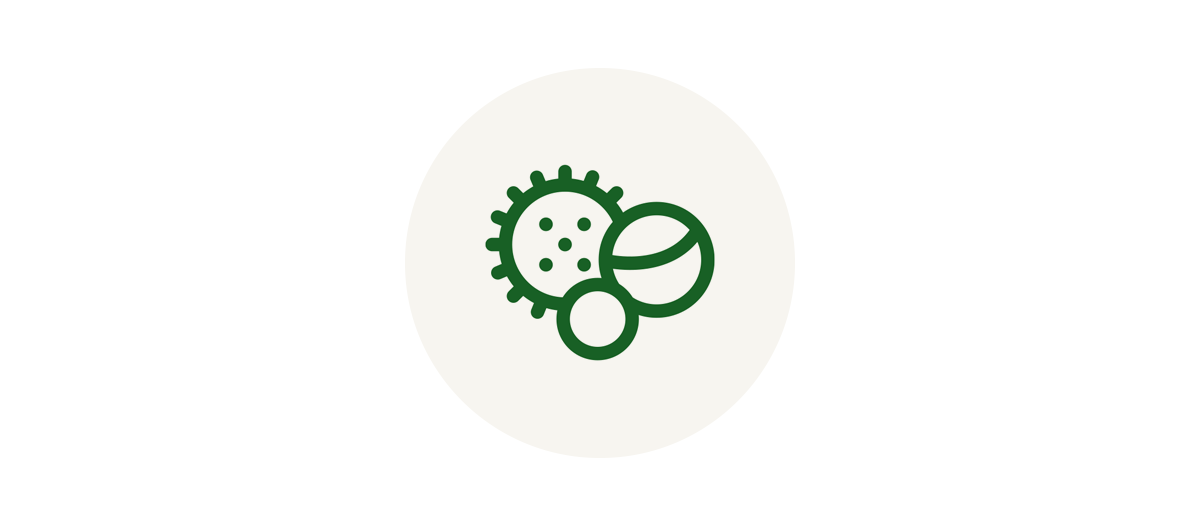How to Stop a Puppy from Biting and Teach Them That Biting Is a No-No
24.06.2024 - Reading time: 4 minutes

There is nothing cuter in this world than puppies. The way they encourage humans to play is simply adorable. It's impossible to resist them, and before you know it, a little tail-wagging puppy has discovered your hand as a chew toy. When an adult dog bites, it’s anything but funny. With a few training tips, you can teach your little friend how to chew appropriately without biting.
Take a look into its mouth: How is the puppy's bite developing?
A strong set of teeth is essential for a dog. But they aren’t born with them:
Puppies are born blind, deaf and toothless. While they are still nursing from their mother, they do not need teeth. Between three and six weeks milk teeth emerge. Milk teeth include two canine teeth, six cheek teeth and six incisors in the upper and lower jaws, puppies will have 28 milk teeth. What is striking about these first teeth is that they are much more pointed than those of an adult dog. Puppies replace their milk teeth and develop adult teeth when they are between four and seven months old. Their fully formed set of adult teeth has 42 in total.
The exact time and duration of dog teeth development takes place during puppyhood and depends on the breed, during a period of time when the separation from mother and littermates has usually already taken place and the young dog is living in its new home. One of the important lessons to teach at this point is what he is allowed to bite on with his teeth and what not and it’s not so easy, because the need to bite and gnaw is high while puppies are teething.
What about inhibiting biting?
Normally dogs do not bite unless there is a reason to do so. Bite inhibition is a behavior that ensures that dogs do not hurt each other when fighting/playing or while they are with humans.
Bite inhibition is not innate, however: young dogs learn this behavior through interaction with their parents and littermates, starting around four weeks. This is also one of the reasons why separating the puppy from the litter too early can lead to socialization problems. If the dog has not learned that it must not snap or bite hard in play or in anger, it is important to instill this in the dog consistently. Snapping and biting incidents in dog ownership are often the result of a lack of bite inhibition or insufficient training.
Why do puppies bite during play?
Biting during play is a totally natural behavior in developing puppies. As soon as the teeth appear, they need to try them out – for example, by biting one of their littermates, who will not put up with this behavior and will snap back, which in turn causes pain.
During these young dog biting episodes, the bite inhibition described above is formed. The puppy learns that after biting, it will be bitten back – i.e. something unpleasant will follow. The very beginning of playful biting is therefore about building up socialisation. Once the dog has understood that it has a new master or mistress and that it can stay in its new home forever, it will be the best friend you ever had.
When the puppy gets a little older, the change of teeth provides another impulse. The puppy tries to influence the stimuli associated with the change of teeth in its mouth by gnawing and nibbling more. Puppies use biting in certain situations when interacting with humans in their home for example as an invitation to play, as an expression of frustration, excitement or when exploring unknown objects.
How can I break the puppy's biting habit?
What still seems cute in a puppy can become problematic in an adult dog, so you should stop your puppy from biting immediately and consistently.
The following tips will help you to break your puppy's biting habit:
- Chew toys: When handling the dog, always keep an object handy that your dog is “allowed” to use for biting and nibbling.
- Consequence: If the dog gets hold of forbidden objects or even your fingers or toes, react firmly. Take the forbidden object away from your sharp-toothed puppy, together with an appropriate word signal (“No!”), but at the same time offer him the appropriate chew toy and praise him if he takes it.
- Clickers: If you have experience with clickers, you can apply this principle also to anti-biting training: If the puppy refrains from biting, the clicker sound will be used to positively reinforce the behaviour at exactly the right moment.
- Play break: If the puppy cannot be distracted and continues to bite stop the play immediately. Say “No!” firmly and ignore the animal for a few minutes or put them in an area to calm down briefly. This way, your puppy will learn that rough behaviour will scare their human away.
- Careful: When interacting with a young dog, use calm and measured movements. This also applies to petting: it is better to massage than to pat to keep interactions positive to stop pets urge to react and bite.
Do not encourage your puppy to bite while playing. Use clear commands like “STOP” and “NO” to communicate the behavior is not appropriate.
Which toys are suitable when the puppy bites?
Suitable toys that can be encouraged to use to chew or gnaw on are:
- Rubber balls
- Play ropes
- Suitable chewing toys
- Stuffed animals for dogs
During the teething process, avoid wild tugging games – the worst case scenario, this can promote misaligned teeth. Choose teething toys without squeakers: the “rewarding” sound of biting can have a stimulating and counterproductive effect on the dog.



